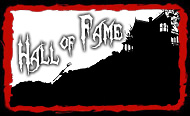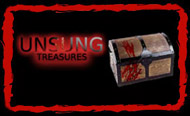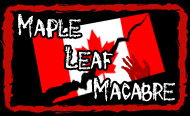
Written by: Brent Maddock & S.S. Wilson
Directed by: Ron Underwood
Produced by: Gale Anne Hurd
Reviewed by: J.T. Jeans
This review contains MODERATE SPOILERS for the film Tremors.

Recent illness aside, a review of Tremors is something I've wanted to write for some time now, but I've never felt that I was impartial enough to write one that was fair and clinical. My feelings for the film are quite strong because it single handedly secured my undying love for the giant creature sub genre, surpassing even JAWS -- the former mistress of my affections for all things vis-à-vis giant critters nibbling on hapless humans.
Obviously this review is heavily biased, so if you're looking for a levelheaded examination of the film's strengths and weaknesses... well, you're probably better off looking elsewhere. There are very few things that I feel the film did wrong.

At the time, I wasn't quite the horror fan I became in later years, and despite the blatantly comedic elements in the film, the concept of Graboids scared me absolutely witless! I think I spent two or three days being paranoid about going into my front yard (a giant section of the yard was covered by soft white sand. I discovered plenty of fleas and ants lurking beneath that sand over the years, but thankfully no Graboids.)
The fact that the film scared me something fierce didn't stop me watching it again that weekend, and again the following week, and again the next weekend. By the end of the month I was hooked right and proper, and my love of the giant monster sub genre was set firmly in place.
As I grew up, Tremors became a very important film to me. It's one of those films that I fall back on when life looks bleak. It's a reminder of my childhood; of a time when life was simpler, and the only things I worried about were the demons in my dreams and the monsters under the sand.
For me, Tremors is comfort cinema at its finest.

On the way back into town -- their intention being to sort out Nester's (Richard Marcus) garbage dump -- they encounter a graduate student named Rhonda LeBeck (Finn Carter) who, due to odd readings that are inconsistent with the terrain, believes that the university's seismology equipment has gone lemon.
Throughout the course of the day, we learn that while Val and Earl do have the desire to achieve bigger and better things, they continue to stagnate in Perfection due to good ol' fashion fickleness. As Val tells Burt Gummer (Michael Gross) early in the film: "We plan ahead, that way we don't do anything right now." It perfectly sums up the duo's situation -- they look to the future without taking the time to live in the now. After all, why do today what you can put off until tomorrow?

Unfortunately, subterranean beasties with a penchant for soft pink flesh throw the proverbial monkey wrench into Val and Earl's departure plans, and in doing so force them to become the ad hoc defenders of the (slowly dwindling) denizens of Perfection Valley.
Tremors has its tongue very firmly planted in its cheek, and that's a good thing. The concept of giant monster burrowing through the Earth and plucking unlucky bipedals like berries from a bushel is absolutely bonkers. It's Wacko Jacko. It's the sort of thing you read in pulpy sci-fi/horror anthology. And that's the point.
S.S. Wilson and Brent Maddock originally devised the concept under the title Land Shark, but after seeing an SNL skit featuring a comedic character by the same name, they ditched the title before ultimately shelving the concept entirely.

The thing that differentiates Tremors from other self-aware genre films is that the movie is actually quite scary. When asked to describe the film in a single sentence, the first thing that comes to my mind is "JAWS in the desert." Granted, it doesn't quite have the same sort of gravitas as JAWS -- which is probably to do with the fantastical nature of the Graboids vs. the reality-based dramatization of a rogue shark -- but the idea of underground monsters that hunt us by the sound of our footsteps is quite a scary thought.
Another similarity is in the presentation of the creature. Ron Underwood's deliberate decision not to show the creature right away is reminiscent of Spielberg's decision to do the same in JAWS -- we see very little of the Graboids until about 30 minutes into the film, and what we do see is fleeting glimpses of slimy snake-like creatures which, as we later learn, are barely the tip of the iceberg. I remember being absolutely mortified when the true nature of the beast was revealed for the first time.

Changing things up for a moment -- and since this is a personally driven review -- I need to have a bit of a rant about the film's soundtrack.
Ernest Troost was initially hired to write the score for the film. Indeed, he's the only one to get on-screen credit for the job of composing the film's incidentals. What few people realize is that much of Troost's music was rejected. Entire motifs and character themes are either keyed down or abandoned altogether. Those of you who have purchased the promotional score will know what I'm talking about -- even the very first track on the CD is almost entirely unfamiliar material, composed for a sequence that was cut out of the film at an early stage of production. There's some good stuff on the disc, but it doesn't quite have the same oomph as what is heard in the film.

In the film, Folk's motifs are interwoven pretty seamlessly with Troost's -- one minute you're hearing superb horror tunes composed by Folk, the next you're hearing a peppy pole vaulting motif written by Troost. It works well.
While none of Folk's score is available on the Tremors promotional CD, Folk released a compilation album that features a 17-minute suite from the film. Unfortunately, this album was also a promotional CD and has long since gone out of print. Search as I might, I can't find hide nor hair of it. I e-mailed Folk about it and was informed that snagging a copy off a collector was probably my only option.
It's pretty rough when the film's composer no longer has access to the CD himself.

Tremors is a film that failed to do major bank for Universal Studios, and as a result the sequels all went DTV. On a budget of $11 million, the film only pulled a domestic gross of $16.6 million, and it sat around collecting dust for nearly six years before it saw release on home video.
Today it has a small yet faithful cult following, but the majority of hardcore horror fans seem to discredit it on the basis that it has a very self-aware sense of humor. They're not wrong about that, either -- the film is completely unashamed of the fact that it's a throwback to the giant monster films of the 1950s and 1960s, but despite its roots in a genre known for a considerable amount of pedestrian output, the film manages to be funny, tense and frightening all at the same time.

If you happen to stumble across a copy in Wal-Mart or Best Buy, definitely pick it up. It's Essential!



comments powered by Disqus Ratings:








